The AMD Ryzen 9 7950X3D Review: AMD's Fastest Gaming Processor
by Gavin Bonshor on February 27, 2023 9:00 AM ESTCPU Benchmark Performance: Power And Office
Our previous sets of ‘office’ benchmarks have often been a mix of science and synthetics, so this time we wanted to keep our office section purely on real-world performance. We've also incorporated our power testing into this section too.
The biggest update to our Office-focused tests for 2023 and beyond include UL's Procyon software, which is the successor to PCMark. Procyon benchmarks office performance using Microsoft Office applications, as well as Adobe's Photoshop/Lightroom photo editing software, and Adobe Premier Pro's video editing capabilities. Due to issues with UL Procyon and the video editing test, we haven't been able to properly run these, but once we identify a fix with UL, we will re-test each chip.
We are using DDR5 memory on the Ryzen 9 7950X3D and the other Ryzen 7000 series we've tested. This also includes Intel's 13th and 12th Gen processors. We tested the aforementioned platforms with the following settings:
- DDR5-5600B CL46 - Intel 13th Gen
- DDR5-5200 CL44 - Ryzen 7000
- DDR5-4800 (B) CL40 - Intel 12th Gen
All other CPUs such as Ryzen 5000 and 3000 were tested at the relevant JEDEC settings as per the processor's individual memory support with DDR4.
Power
The nature of reporting processor power consumption has become, in part, a bit of a nightmare. Historically the peak power consumption of a processor, as purchased, is given by its Thermal Design Power (TDP, or PL1). For many markets, such as embedded processors, that value of TDP still signifies the peak power consumption. For the processors we test at AnandTech, either desktop, notebook, or enterprise, this is not always the case.
Modern high-performance processors implement a feature called Turbo. This allows, usually for a limited time, a processor to go beyond its rated frequency. Exactly how far the processor goes depends on a few factors, such as the Turbo Power Limit (PL2), whether the peak frequency is hard coded, the thermals, and the power delivery. Turbo can sometimes be very aggressive, allowing power values 2.5x above the rated TDP.
AMD and Intel have different definitions for TDP that are, broadly speaking, applied the same. The difference comes from turbo modes, turbo limits, turbo budgets, and how the processors manage that power balance. These topics are 10000-12000 word articles in their own right, and we’ve got a few articles worth reading on the topic.
- Why Intel Processors Draw More Power Than Expected: TDP and Turbo Explained
- Talking TDP, Turbo and Overclocking: An Interview with Intel Fellow Guy Therien
- Reaching for Turbo: Aligning Perception with AMD’s Frequency Metrics
- Intel’s TDP Shenanigans Hurts Everyone
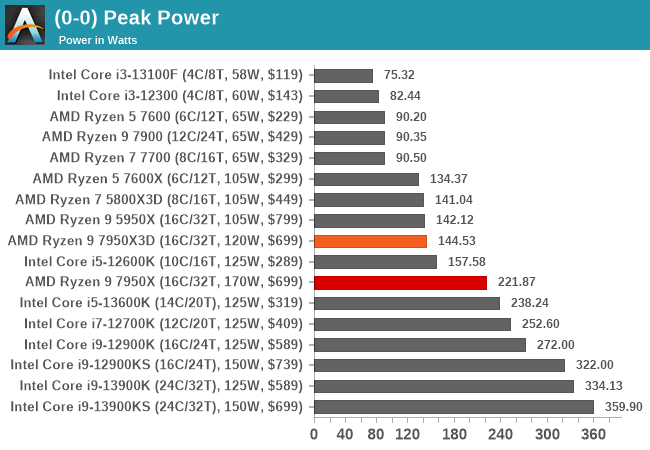
Given that the Ryzen 9 7950X3D has a lower TDP and PPT rating than the Ryzen 9 7950X, it pulls less power. We observed a peak power output of 144.53 W on the 7950X3D, compared to 221.87 W on the 7950X. Talking figures, the Ryzen 7950X3D is pulling around 65% of the power of the 7950X, which is understandable given the power limitations due to the CCX laden with AMD's 3D V-Cache packaging.
Looking at the power consumption of the Ryzen 9 7950X3D in closer detail, we can see that it delivered a consistent load of between 140 and 144 W in our Prime95 sustained power test. This is around 18 Watts lower than the official Package Power Tracking (PPT) level AMD has set at 162 W. However, it operates higher than the TDP of 120 W, which is to be expected. The TDP and PPT ratings are different as the TDP is the base power the CPU should be drawing, while the PPT (socket), set at 162 W, is the maximum the processor can draw as a maximum under full load.
Office/Web
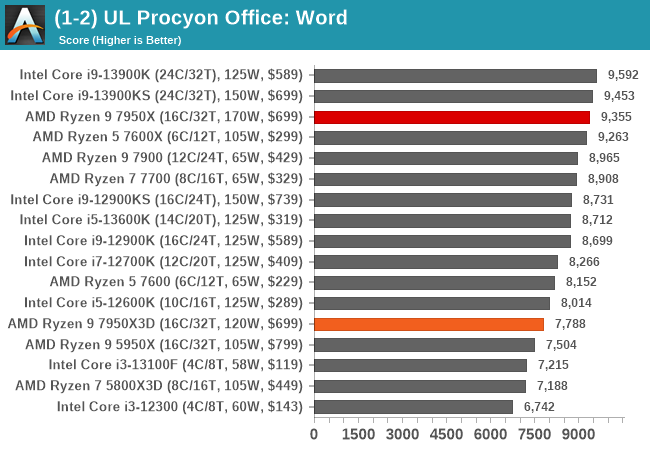
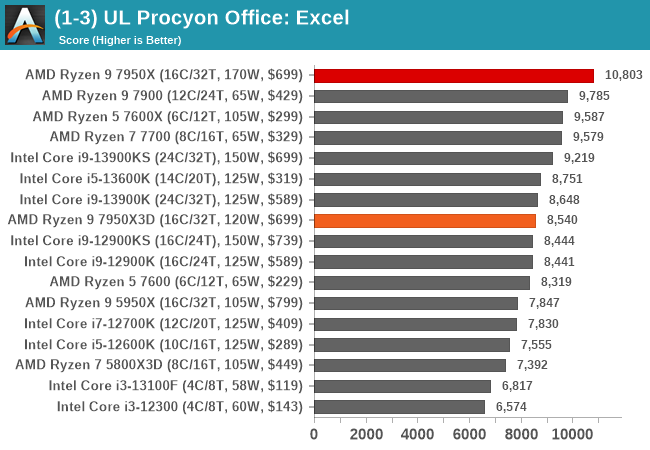
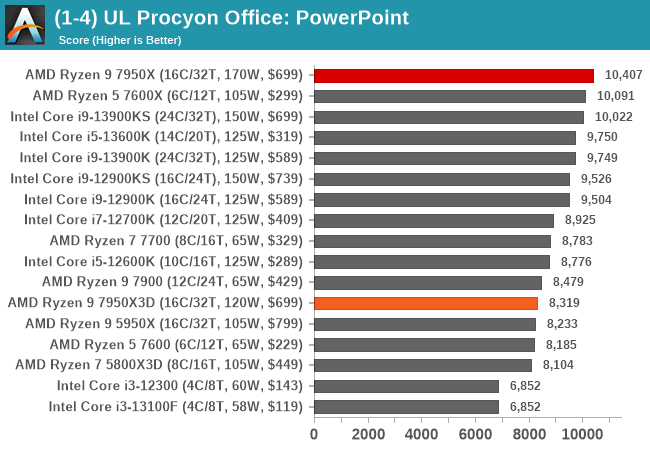
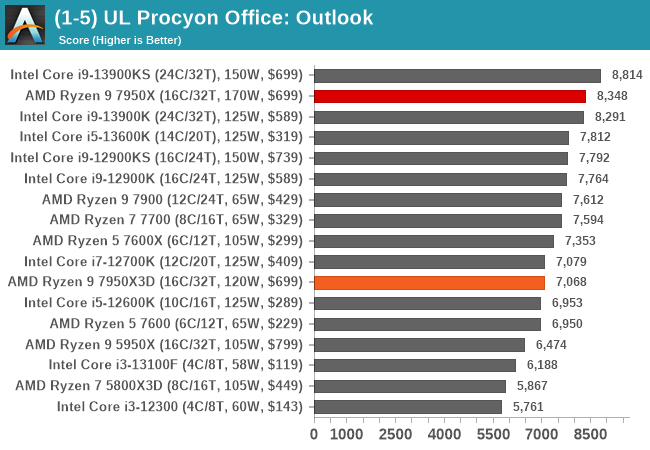
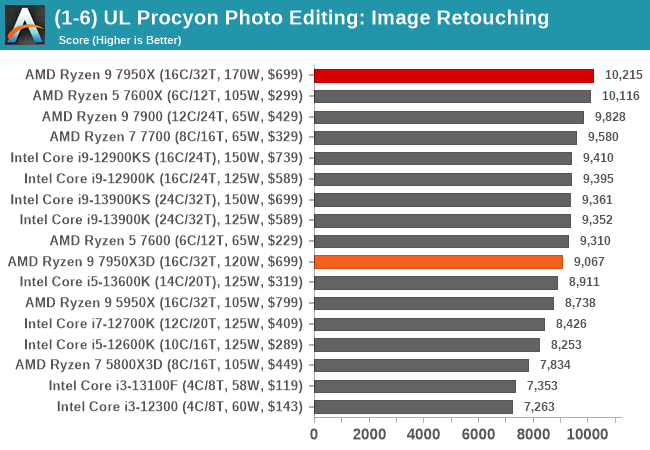
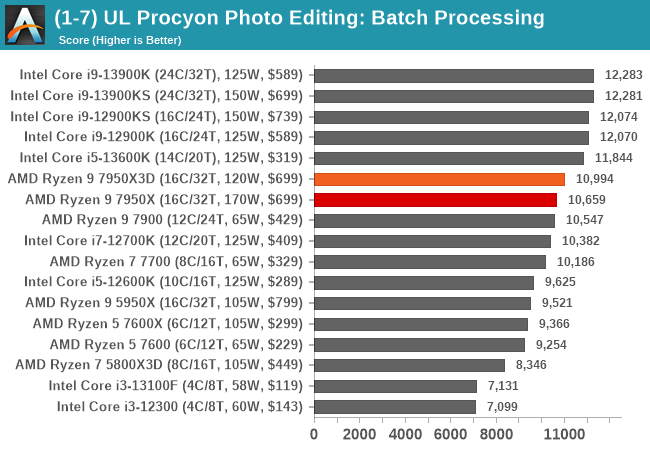
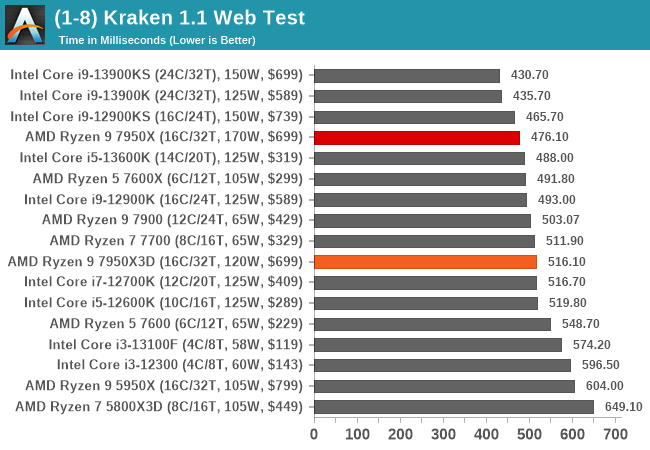
In our office-based testing, the Ryzen 9 7950X3D performs a little worse than the 7950X, but this is to be expected given the differences in TDP, PPT, and the overall power envelope. Still, the 7950X3D performs well and is more than suitable for office and web-based tasks.


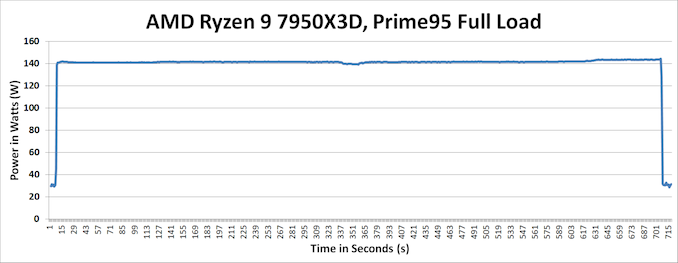








122 Comments
View All Comments
Gavin Bonshor - Monday, February 27, 2023 - link
I'm currently in the middle of testing data in all three modes (Auto, Cache, and Frequency mode)Dante Verizon - Monday, February 27, 2023 - link
Radeon RX 6950 XT - There will be no significant differences using this GPUMakaveli - Monday, February 27, 2023 - link
The GPU is fine the bigger issue for me is those terrible memory speeds being used. Nobody buys jedec memory for their builds unless you are an OEM.Ryan Smith - Monday, February 27, 2023 - link
This discussion comes up now and then. But right now our stance remains unchanged: when AMD is willing to warranty memory overclocking, we'll start using it as a base setting.Otherwise, it's disingenuous to test a CPU in a state that's outside its normal operating parameters, and which would result in an RMA being rejected if anything happened to it.
Otritus - Monday, February 27, 2023 - link
I think you should put this note inside the review and future reviews because it is a valid reason for why it is being benchmarked as such.lopri - Wednesday, March 1, 2023 - link
Agreed 100%Oxford Guy - Wednesday, March 1, 2023 - link
Has AMD or Intel ever denied a warranty claim because someone used an XMP profile?I'd love to see an article about that!
blkspade - Wednesday, March 22, 2023 - link
Intel RMA survey actually asks if you used XMP as grounds to deny your RMA. They count it as oveclocking. AMD on the other hand doesn't even ask about memory profiles. I've had to do a RMA for both an i7 7700 and a R7 2700.nandnandnand - Monday, February 27, 2023 - link
Looks like a messy faceplant with the scheduler issues.RHamel - Monday, February 27, 2023 - link
Yes, the scheduler clearly isn't smart enough to assign threads to the optimal CCD with any consistency. AMD's "best of both worlds" design ends up being the worst of both worlds about half the time.They should have just put the 3D V-Cache on both CCDs and avoided this whole mess; anyone putting this (instead of a 7950X) in a workstation/HEDT obviously is running some kind of cache-limited workload and would prefer extra L3 on all cores to this design even if the scheduler worked perfectly.